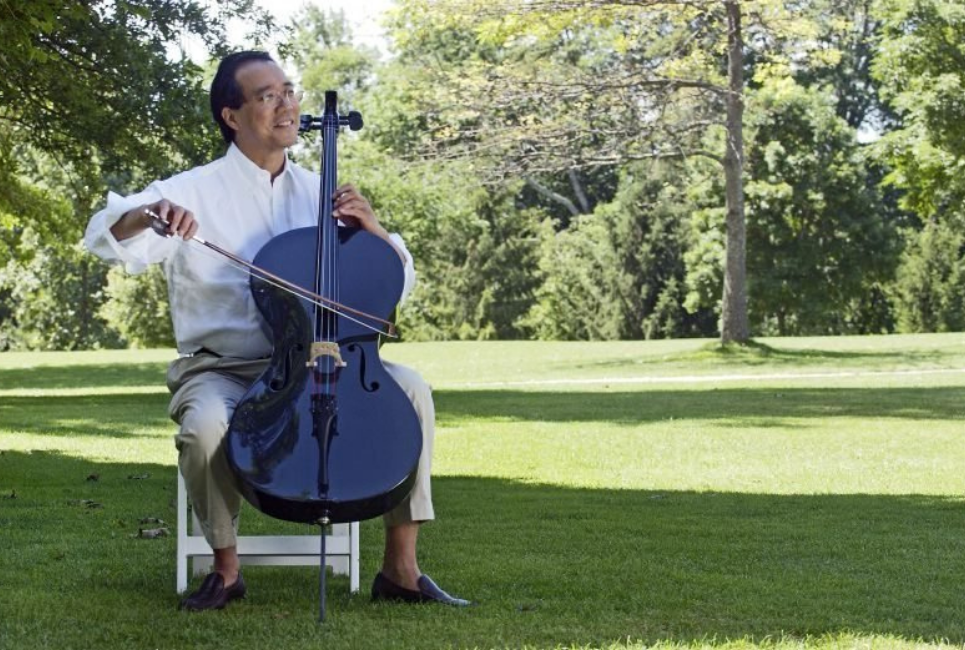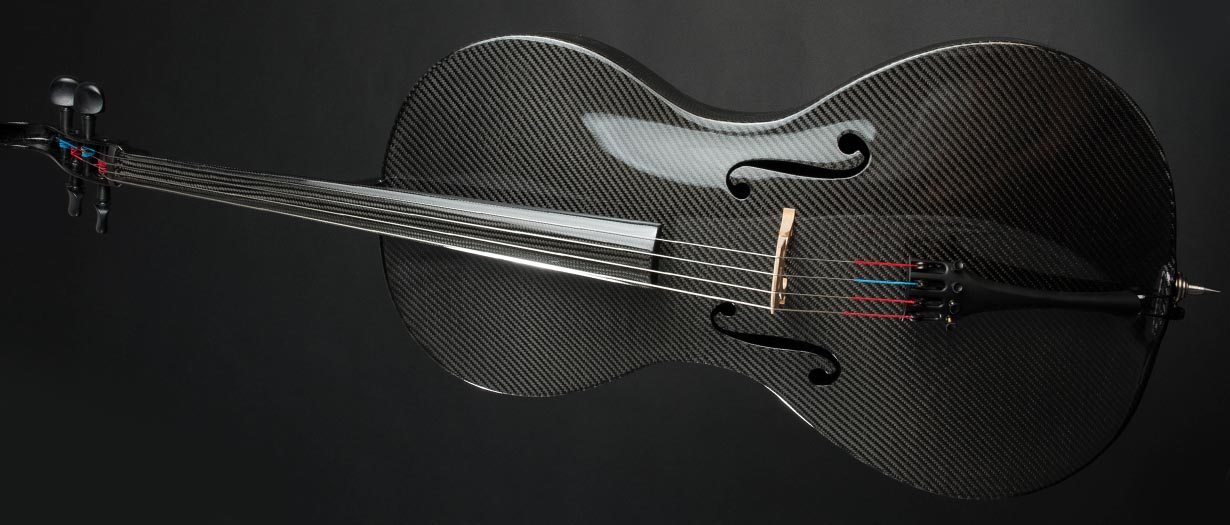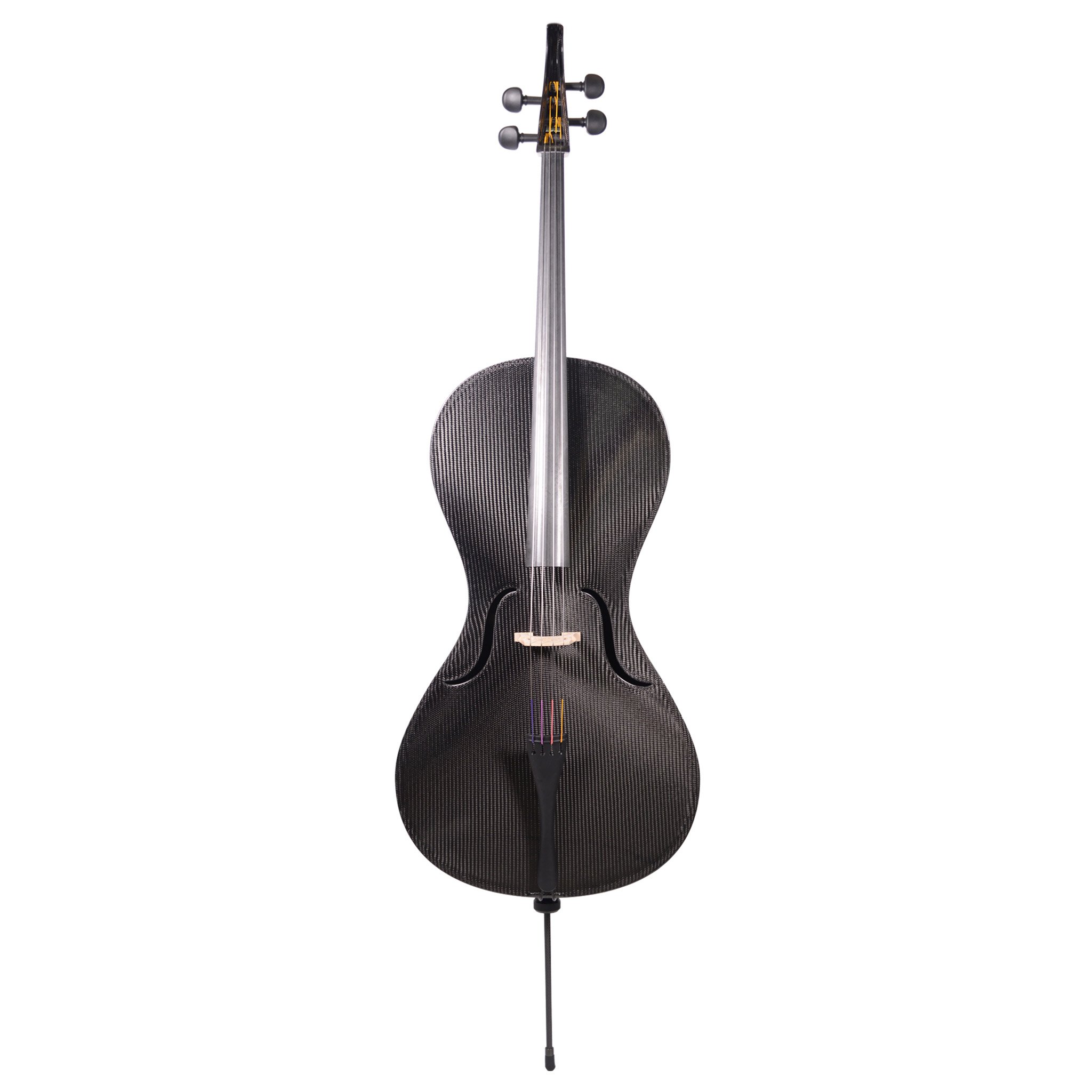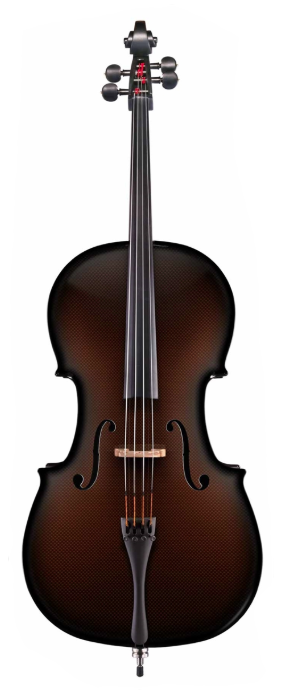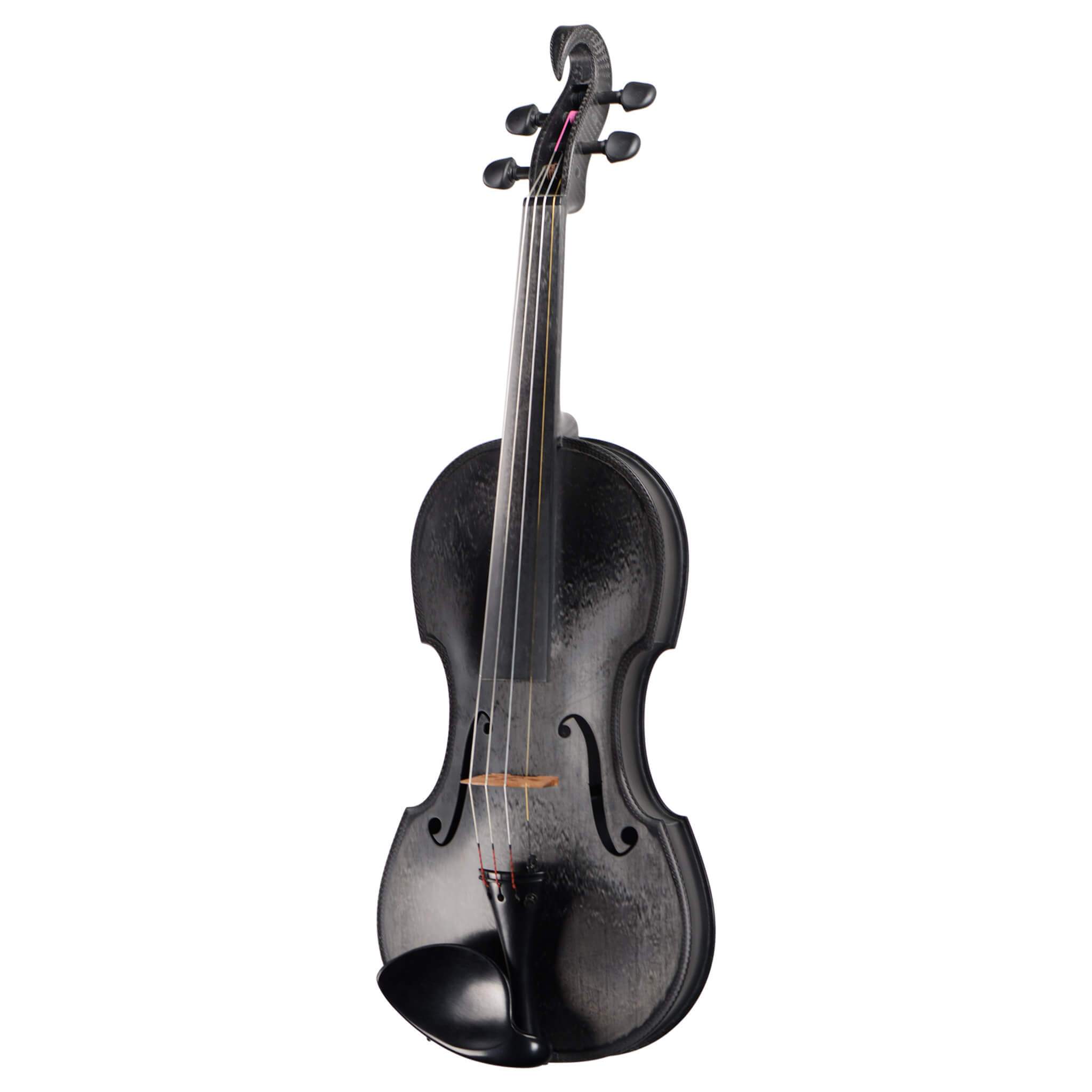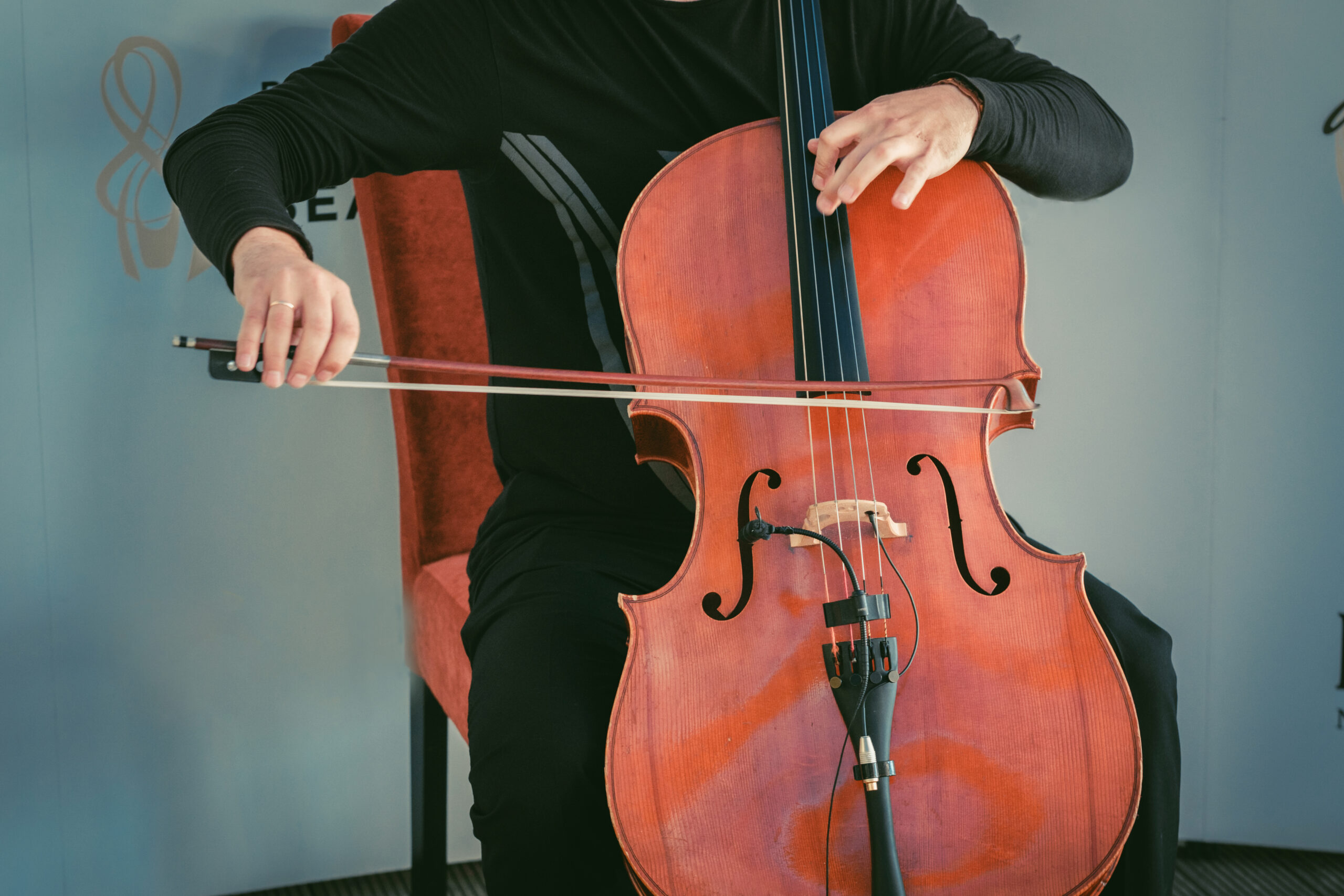- Best Carbon Fiber Cello Options - December 15, 2021
The dread of most stringed-instrument players is heat, sun, extreme cold, travel, and that unanticipated case-crushing disaster. Assume you’re teaching a cello workshop at a summer music festival. The temperature increases, the sun is shining, and the humidity makes you feel like you’re onstage rather than submerged. Your shirt impression is visible on the weakened varnish of your prized cello.
Whether the prospect of journeying to the relative wilds of Tanglewood in the northwestern highlands of Massachusetts with your favorite ax in tow makes you sweaty-palmed, or if you’re a member of the Joint Services Orchestra performing, At the bone-chilling Obama Inauguration, having a violin that can withstand the warmest days of July or the coldest January mornings, one that can be checked as flight luggage without anxiety… and sound nice… is essential. So, what’s the deal? Let’s find out!
What to Know About Carbon Fiber Instruments
Carbon fiber is a material made of carbon atoms. According to Matt Dunham, president of Clear Carbon and Components, Inc., which makes the Luis and Clark violin, viola, cello, and double bass shells, carbon-fiber instrument producers employ a matrix of carbon fiber and resin to build their instruments. During a phone interview from Luis and Clark’s Milton, Massachusetts headquarters, Dunham adds, “Carbon fiber in its basic form is a skein or tow. These tows are carbon fiber bundles. Heat and pressure are used to make them. Each bundle or tow can include anywhere between 3,000 and 12,000 threads that are woven into a textile or cloth.”
Carbon fabric layers are then put in a mold, covered with resin, vacuum-sealed, and hardened into form. The instrument’s back, ribs, and neck are completely sculpted in one piece, all the way to the pegbox. The top and fingerboard are bonded together after being created separately. These forms are then hand-trimmed with diamond-edged tools after they’ve been formed.
The materials and building process provide a distinct sound. Beauty is in the eye (or ear!) of the beholder, as it is with most musical and creative endeavors. It takes some getting used to playing a carbon-fiber instrument. They sound deeper and louder than wood instruments and have a distinct resonance than wood instruments. “You get a very decent sound when you sit right in front of a wooden cello,” says Luis Leguia, the world-renowned Boston Symphony cellist and founder of Luis and Clark carbon-fiber instruments. “However, in a 2,500-seat auditorium, that sound will be absorbed by the bodies.” Furthermore, as you walk to the sides, the sound will become less full and have less body. The cellos are powerful and fill the auditorium; they are less penetrating immediately in front, but the sound spreads out to all sides, so even if you’re seated 60 degrees away from the performer, you’ll receive a full-bodied sound.
Why Should I Buy a Carbon Fiber Cello?
Carbon fiber cellos are still in their infancy when compared to wooden cellos, which have been used since the early Italian civilization in the 15th century. They appeared just a few decades after the creation of high-tensile strength carbon fibers. Carbon fiber cellos, while not for everyone, provide unique attributes that their wooden counterparts may struggle to duplicate.
Performance
Its composition enables modifying the sound of a carbon fiber cello easier. It is known to have a greater resonance than a wood cello, as well as being hyper-responsive and dynamic, with a tone quality praised by many professional players who claim it equals, if not exceeds, the capabilities of a wooden cello.
Durability
Carbon fiber cellos retain their original form even after extended use. They are almost break-resistant and can be cleaned with almost any cleaning equipment with ease. Wood is prone to warping and cracking, it compresses and swells on a regular basis, necessitating continual care and maintenance. None of these characteristics are present in carbon fiber, allowing musicians to perform in a variety of locations, including ones with harsh weather conditions.
Carbon Fiber Cello Options
When it comes to finding a decently priced cello, let alone a carbon-fiber cello, it can be quite difficult. Since carbon fiber is so new to the instrument industry, there aren’t many options for you. We’ve done our research, and we were able to find the top 3 cellos out there that will suit your needs.
Luis and Clark Carbon Fiber Cello
As someone who appreciates the beauty of stringed instruments, this takes it beyond. The beauty of all black cello is quite pleasing to one’s eye. Not only is this cello beautiful, but it also has plenty of good qualities to it.
Pros
- Ergonomically constructed for cellist comfort and injury prevention (including “sore shoulder syndrome”).
- The lack of a cornice allows it to be played closer to the body, reducing the height of the bow arm at the point of the A string.
- This cello is more pleasant to play than traditional wooden cellos since there is no sharp edge from the cello neck pressing against the students’ chest.
- Maintaining it takes very little time and effort.
- Throughout the year, just one size for the bridge is required.
- Windex is used to clean the exterior.
- Perfect for beginners.
- The Luis & Clark cello was created expressly to stand up against a full orchestra or grand piano, with very powerful resonance and a lovely tone. It’s ideal for soloists and orchestra/pit performers.
- This cello is extremely resistant to damage, temperature, and humidity, and can be played outside in the winter snow or in a hot, humid practice hall without splitting! It’s ideal for outdoor performances and settings where instruments may be damaged (touring, hiking, pit orchestras, schools, bars, etc).
Cons
- It is a bit pricey for a beginner’s cello.
- Can’t buy it in the store.
Mezzo-Forte Carbon Fiber Evo Line Cello – Fiddlershop
Mezzo-carbon Forte’s fiber cello is designed and manufactured in Germany utilizing cutting-edge technology. This future vision generates a sound quality that is quite similar to that of a wooden instrument but with more presence and projection.
The Evo Line, unlike the Design Line Cello, is not lacquered but merely polished, yet it still delivers 100 percent weather and climate protection as well as the signature carbon aesthetic.
Pros
- Perfect for beginners.
- Two-piece body-style.
- The instrument is made of carbon and is glued to it. It provides warmth to the lower strings while also assisting in the stabilization of the top.
- Aubert’s hand-carved professional-quality bridge.
Cons
- Not lacquered, only polished.
Glasser Carbon Composite Cello – Fiddlershop
Cellos made of wood take a hammering and are frequently harmed by changes in the weather. The cellos made by Glasser are far more durable. They’re not only built to last, but they also look and sound terrific. Glasser’s patent-pending design results in an instrument with exceptional tone characteristics and a level of endurance that few other instruments can equal.
The basic Glasser Carbon Composite cello comes fully equipped with Larsen strings, Planetary Tuning Pegs, and a carbon composite Glasser tailpiece with four fine tuners for maximum tuning stability.
Pros
- This cello is extremely resistant to damage, temperature, and humidity. It can be played outside in the winter snow or a hot, humid practice hall without the worry of splitting.
- Perfect for someone who has experience playing the cello.
- Maintenance takes little time and effort.
Cons
- Cannot be purchased in-store, only online.
Carbon-Klang Elena Cello – Fiddlershop
This one-of-a-kind premium cello is built of the finest carbon fiber and possesses unrivaled power. CarbonKlang created it by hand in Germany. The body is made up of a complicated multi-layer carbon fiber laminate with a sandwich-like construction.
Pros
- Wittner finetuning pegs.
- This cello is also extremely resistant to damage, temperature, and humidity and can be played outside in the winter snow or in a hot, humid practice hall without the worry of splitting.
- The fingerboard is made up of a carbon composite.
- Perfect for a professional cellist.
Cons
- Cannot be purchased in-store, only online.
- Very pricey.
Carbon Fiber Versus Wood
If you go to an outdoor concert with an orchestra or string group, you’re likely to witness one or more carbon fiber instruments. Carbon fiber violins, cellos, mandolins, and other instruments are becoming more popular among wealthy musicians. Can they, however, be just as good?
Carbon Fiber Sound
Customers are often amazed by the warm tone carbon fiber violins, and cellos generate, according to Mezzo-Forte. Their design holds the key. All of the conventional characteristics that constitute an instrument’s sound have been carefully translated to Mezzo-carbon Forte’s fiber versions. For sound posts, tail pieces, end pins, chin rests, bridges, and finger boards they seek to maintain true to original designs.
In a nutshell, a violin or cello’s sound is made up of more than just its wooden box. Designers may create instruments with a rich, warm, and dazzling tone that matches even the most costly Stradivarius by keeping to the classic violin’s basic shape and architecture.
Electric and Acoustic
Another advantage of using carbon fiber to make musical instruments is the possibility to make both acoustic and electronic versions. A carbon fiber violin is played just like a standard violin in an acoustic context. When electricity is required, the violin is hooked into a sound system in the same way as an electric guitar is. The sound is sent to the sound system and out the speakers through a built-in electromagnetic pickup.
Final Verdict
If you’re going to buy a cello, go with carbon fiber instead of wood. Carbon offers many more benefits than wood does. Although there are downsides to both, carbon fiber is much more worth your money. As said above, creators are making carbon fiber instruments that maintain the warmth and dazzling effect of wood instruments.
FAQs
Answer: You may have guessed the main reason for using carbon fiber in musical instruments: durability. Carbon fiber, without a doubt, outperforms wood in all types of environmental situations. When it comes to the sound of carbon fiber instruments, they have the same, if not better, sound qualities of those that nare wooden.
Answer: Carbon fabric layers are then put in a mold, covered with resin, vacuum-sealed, and hardened into form. The instrument’s back, ribs, and neck are completely sculpted in one piece, all the way to the peg box. The top and fingerboard are bonded together after being created separately.
Answer: Denatured alcohol may be used to clean 99 percent of carbon fiber cellos. Put it on a rag and wipe till you’re satisfied. The alcohol will not harm your cello and will totally dry. It may remove part of the stain or color off the body, but don’t worry about it. If your stain eventually fades, you can totally take it to a shop and it get the stain freshened up or you can do it yourself.
Carbon Fiber Cellos
A substance comprised of carbon atoms is known as carbon fiber. A skein or tow is the most basic type of carbon fiber. Carbon fiber bundles make up these tows. They’re made with heat and pressure. Each bundle or tow of threads woven into a textile or cloth might include anywhere from 3,000 to 12,000 threads. After that, the carbon fabric layers are placed in a mold, coated in resin, vacuum-sealed, and hardened into shape. The back, ribs, and neck of the instrument are entirely carved in one piece, all the way to the pegbox. After being made individually, the top and fingerboard are glued together. After they’ve been made, these shapes are hand-trimmed with diamond-edged tools.
Its composition makes it easy to change the sound of a carbon fiber cello. Even after extensive usage, carbon fiber cellos maintain their original shape. They’re almost impervious to breakage and can be cleaned with nearly any cleaning equipment. If you’re planning to buy a cello, avoid wood and opt for carbon fiber instead. Carbon fiber has many more advantages than wood, and while both have drawbacks, carbon fiber is far more valuable. As previously stated, designers are creating carbon fiber instruments that retain the warmth and brilliant look of wood instruments. What do you think of carbon fiber cellos?
Looking for more interesting readings? Check out:

